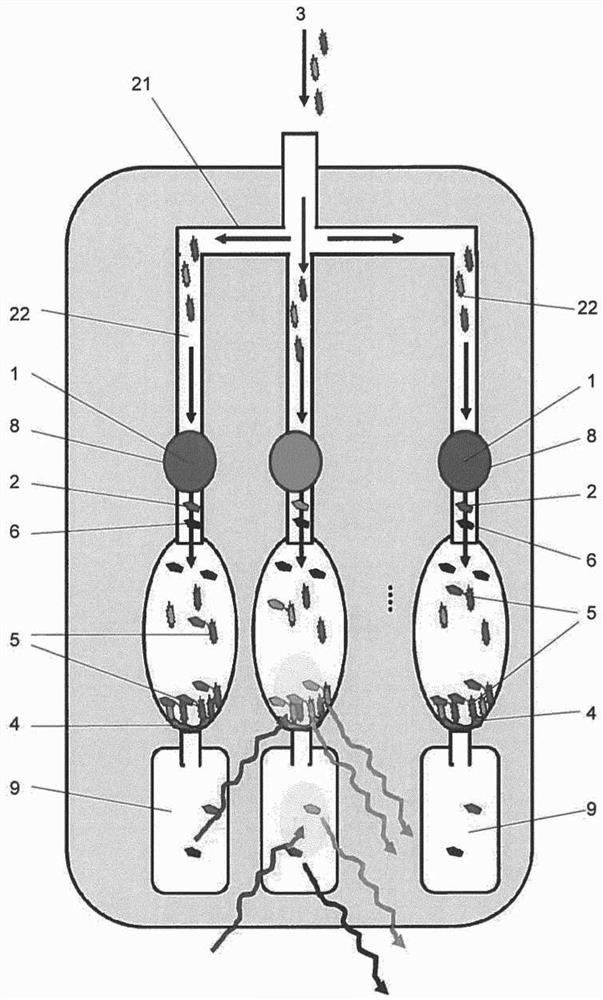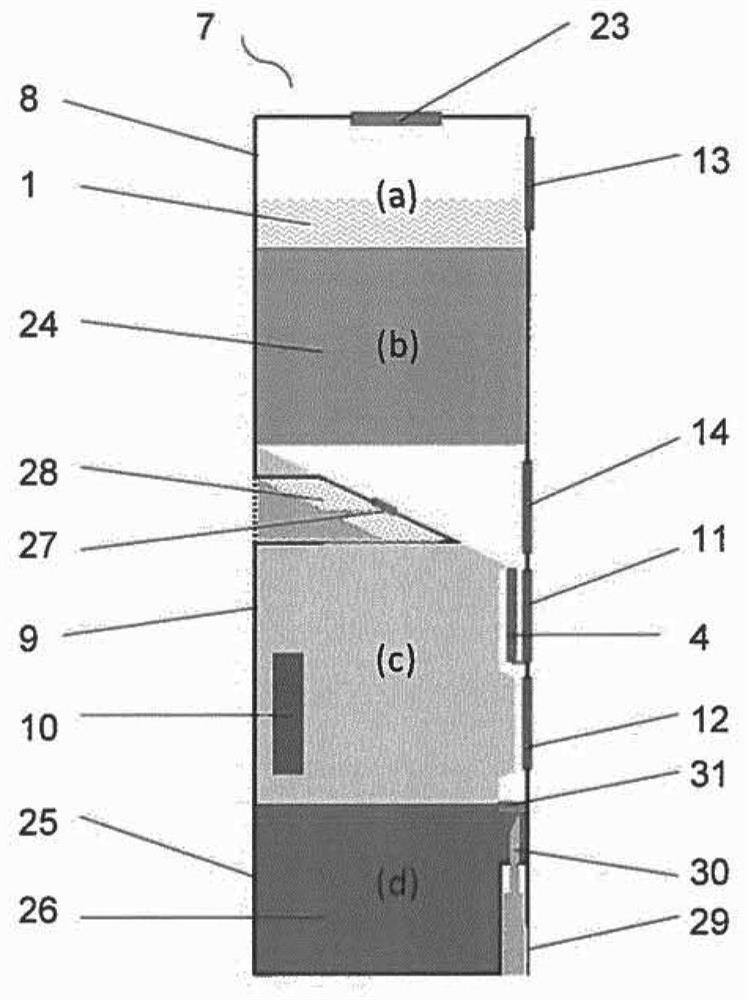Method and device for detecting bacteria
A technology to detect bacteria and to be detected, which is applied in the accelerated and highly sensitive detection of bacterial pathogens, in the field of bacteria-phage-complex, which can solve the problems of food recall, economic loss, prolonged storage time, etc., and achieve easy processing, cost reduction, The effect of highly sensitive identification
- Summary
- Abstract
- Description
- Claims
- Application Information
AI Technical Summary
Problems solved by technology
Method used
Image
Examples
Embodiment 1
[0175] Will 1×10 11 pfu previously purified and concentrated TB54 phage (see above) was resuspended in a solution containing 0.1M NaHCO 3 10ml of PBS (pH 8.5). Subsequently, every 1 x 10 10 Add 100 nmol 5(6)-carboxyfluorescein NHS ester to pfu. Coupling reactions were performed at room temperature in the dark for 1 hour. Such as Figure 7 Schematically shown in , the NHS ester of 5(6)-carboxyfluorescein (2) reacts with primary amino groups of proteins on the surface of TB54 bacteriophage (1) to form stable amide bonds.
[0176] Conjugates were purified by precipitation or by chromatographic methods as described above. Subsequently, the conjugate was photophysically characterized by UV / Vis and fluorescence spectroscopy.
[0177] exist Figure 8 , the excitation and emission spectra of 5(6)-carboxyfluorescein-labeled TB54 phage are illustrated. The spectra show the excitation and emission maxima of 5(6)-carboxyfluorescein at a wavelength of 495 nm and in the range of 520...
Embodiment 2
[0179] A solution of fluorescein isothiocyanate (FTIC) in 0.1 M carbonate buffer (pH 9.0) was prepared. Appropriate aliquots were added to the phage solution prepared in Example 1 and mixed carefully. The phage suspension was incubated in the dark for 1 hour at room temperature. Purification and characterization of the conjugate was performed as described in Example 1.
[0180] 3. Specificity of Bacteria-Phage Interactions
[0181]To demonstrate the great host specificity of the test phage of the tagged species, in a preparatory step, strain C600 (PTC PhageTechnology Center GmbH) was prepared in 10 ml TSB (Tryptic Soy Broth) (Sigma-Aldrich) under standard conditions at 37°C. ), ECOR34 (PTC Phage Technology Center GmbH) and XL10-Gold (Agilent) E. coli bacteria overnight culture. The next day overnight cultures were diluted (1:10 in TSB) and incubated for an additional 2 hours at 37°C. The bacterial suspensions obtained in this way were then mixed in equal proportions (1:1:1...
PUM
| Property | Measurement | Unit |
|---|---|---|
| volume | aaaaa | aaaaa |
| pore size | aaaaa | aaaaa |
Abstract
Description
Claims
Application Information
 Login to View More
Login to View More - R&D
- Intellectual Property
- Life Sciences
- Materials
- Tech Scout
- Unparalleled Data Quality
- Higher Quality Content
- 60% Fewer Hallucinations
Browse by: Latest US Patents, China's latest patents, Technical Efficacy Thesaurus, Application Domain, Technology Topic, Popular Technical Reports.
© 2025 PatSnap. All rights reserved.Legal|Privacy policy|Modern Slavery Act Transparency Statement|Sitemap|About US| Contact US: help@patsnap.com



